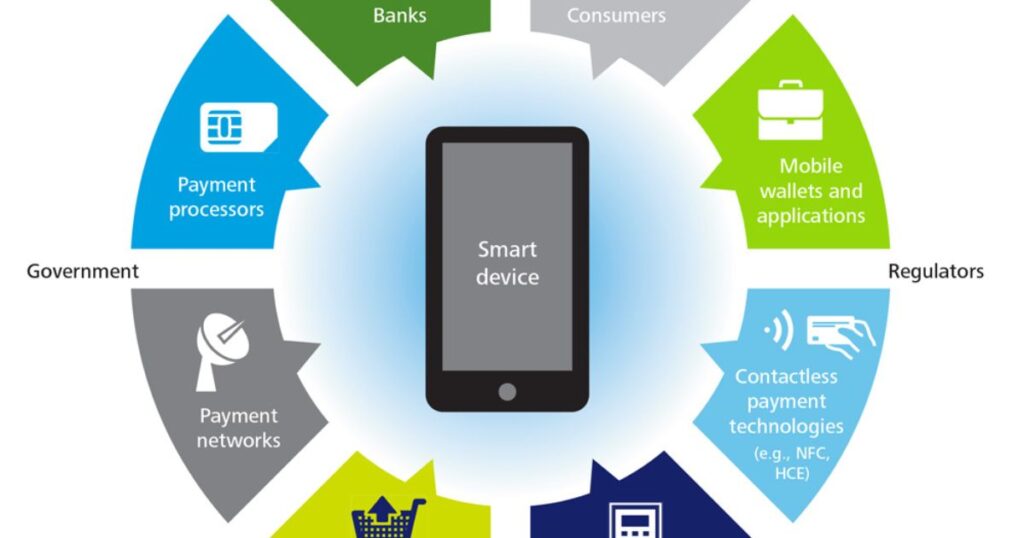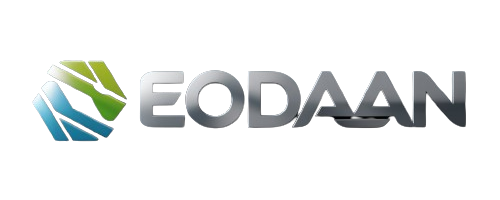Files Over Miles | Revolutionizing File Transfer
File sharing has come a long way from physical media like floppy disks to modern cloud storage services. One innovation that shaped this evolution was Files Over Miles, a revolutionary peer-to-peer (P2P) file sharing platform launched in the early 2000s.
This pioneering service allowed direct browser to browser file transfers, removing the need for intermediate servers or file hosting sites. Through its seamless and secure peer-to-peer approach, Files Over Miles opened new possibilities for real-time collaboration and demonstrated the power of distributed file sharing networks.
Nearly two decades later, the principles of speed, privacy and accessibility it established continue influencing file sharing solutions. This article will provide an in depth look at Files Over Miles’ innovations, technological underpinnings, features and impact.
We will also explore how emerging trends in encryption, artificial intelligence, edge computing and blockchain are further evolving file sharing. By examining both its past and the future, we aim to convey Files Over Miles’ lasting legacy as a trailblazer that transformed how people exchange data online.
What Was Files Over Miles?
Files Over Miles was a peer-to-peer file sharing service that launched in the early 2000s. It enabled fast, direct transfers between web browsers without relying on servers.
How it Worked
Under the hood, Files Over Miles leveraged WebRTC (Web Real-Time Communications) to establish real-time data channels between users’ browsers. WebRTC enabled their computers to connect directly and transmit files in a flash, without intermediaries slowing downloads. As Figure 1 displays, this peer to peer architecture fostered faster, more reliable transfers versus traditional client-server models reliant on centralized infrastructures.
| Method | File Transfer Process | Speed | Reliability | Infrastructure Cost | Privacy |
|---|---|---|---|---|---|
| Client-Server | 1. User uploads to central server <br>2. Recipient downloads from server | Slower due to single connection | Relies on server uptime | Higher costs for servers and bandwidth | Less private if files stored centrally |
| Peer-to-Peer (Files Over Miles) | 1. Direct connection between users’ browsers <br> 2. Simultaneous file streaming | Faster with multiple connections | <b>More reliable as no single point of failure</b> | Lower costs by distributing load | <b>More private without central file storage</b> |
Security Features
To safeguard privacy, Files Over Miles encrypted all file transfers from end to end. As files were never stored on its servers, this design significantly reduced risks of unauthorized access by eliminating central points of vulnerability. Strong security was a core tenet to facilitate responsible sharing across its distributed network.
Also read this blog: Wellhealthorganic Buffalo Milk Tag
How Did Files Over Miles Work?
The service allowed users to easily select and share files through a unique URL that could then be sent to recipients via various channels.
Initiating A File Share
To initiate sharing, one would simply go to the Files Over Miles website and select the desired file. Behind the scenes, the service would then prepare the P2P channel.
Sharing The Link
Next, users received a uniquely coded URL link corresponding to the pending file transfer session. Distributing this link to the intended recipient via methods like email or chat initiated their download automatically once clicked.
The Transfer Process
Upon clicking the link, WebRTC established a direct peer-to-peer connection between the two parties’ web browsers. Simultaneous file streaming then commenced from the sender to the receiver at maximum speeds their network connection allowed.
Completion Of The Transfer
An event notification displayed on both screens once the file was completely transmitted in its entirety. Users could then immediately start utilizing the shared file without further steps.
The Digital Nexus: P2P File Sharing Unveiled
Peer-to-peer networks transformed how files could be distributed by removing centralized servers from the process and linking computers directly.
Defining P2P File Sharing
Peer-to-peer file sharing involves the direct exchange of data between interconnected computers and devices without a centralized intermediary or server. In contrast to the traditional client-server architecture, P2P networks enable a decentralized distribution model for content.
Its Relevance Today
Even in today’s era of cloud storage services, P2P technologies continue to provide benefits for real-time distribution of large multimedia files over the internet given their high-speed, decentralized nature. Industries like media & entertainment rely on P2P for collaborative work sharing high-resolution files on tight deadlines.
Importance Of Efficient File Sharing
Speedy, accessible sharing of files is crucial in our digital age where heavy multimedia content needs to be transferred frequently for various purposes.
Speed And Accessibility
The ability to instantly retrieve files remotely outweighs synching media via physical drives. Efficient sharing empowers on-the-go productivity by giving workers immediate access to necessary assets from any location.
Security And Privacy
Placing sensitive documents onto unsecured services compromises compliance and risks exposure. Robust security personifies privacy-centered file sharing that encrypts transmissions en route to their destination.
Collaboration And Innovation
Unrestricted file exchange stimulates creative processes by allowing dispersed individuals to seamlessly integrate their unique talents into team endeavors. Free-flowing ideas foster innovation in any field.
Cost Efficiency
Traditional storage demands capital outlay whereas lean sharing leverages existing network capacity. Resources instead finance company growth rather than unnecessary physical infrastructure or third-party service subscriptions.
The Legacy Of LimeWire And Beyond
Prior platforms like Napster and LimeWire laid the foundations for how popular peer-to-peer networks became even as they faced various legal challenges.
The Early Days Of P2P
One of the earliest popular P2P clients to emerge was Napster, launching in 1999. This network allowed users to connect directly and share music files between each other. While short-lived due to legal issues, it proved mass-market interest in P2P sharing.
LimeWire, active from 2000-2010, became one of the largest P2P networks for distributing various digital media online in a decentralized manner outside centralized servers.
Modern P2P Platforms
Today, robust P2P networks like BitTorrent and eMule continue to be leveraged globally for sharing large files. Their resilience through decentralization has ensured uptime even if some nodes disconnect. Enterprises also embrace intranet-based P2P solutions for efficiently distributing resource-intensive contents internally.
Emerging Trends In File Sharing
New techniques for file transmission continue to emerge, focusing on enhanced security, integration and leveraging of newer technologies.
Blockchain-Enhanced Security
Blockchain’s distributed ledger architecture eliminating single points of failure through its consensus model offers a robust alternative for authentication and transaction verification during P2P transfers. Encrypting file metadata on the blockchain secures sharing.
AI-Driven File Management
Powerful AI algorithms can categorize, tag, and recommend shared files based on usage patterns to simplify discovering relevant information. Intelligent file bots may even automate common tasks like file conversions, transfers, and integrations with other tools.
Cloud-Native Sharing Technologies
Built for internet-scale, elastic cloud infrastructures distributed worldwide allow scalability for peta- and exabyte-sized file volumes. Serverless architectures improve resilience during unpredictable load bursts while reducing costs for P2P networks.
Increased Focus On User Privacy
Aspiring for privacy by design, new technologies aim to anonymize user identities and activities, allowing control over personal data visibility even while participating in public file-sharing networks. End-to-end encryption is a must.
Universal Access And Collaboration Tools

Integrating file sharing, editing, and commenting capabilities within unified collaboration suites like Slack facilitates cross-team productivity independently of location or devices, supporting remote work scenarios.
Files Over Miles Key Features
The service focused on the direct P2P model for accelerated transfers globally. Browser access granted easy usability without separate plugins.
Direct Peer-To-Peer Communication
Instead of traditional client-server models, Files Over Miles leveraged direct peer-to-peer connections between browsers using WebRTC. This allowed for accelerated transfers without bottlenecks caused by centralized infrastructure.
Browser-Based Accessibility
Unlike other file transfer tools requiring separate plugins, the service ran entirely within a web browser. Its simplicity granted seamless accessibility to anyone with an internet connection.
End-To-End Encryption
Files Over Miles kept shared content private through robust encryption of the entire transfer process from source to destination. No third parties could access files in transit or stored on their infrastructure since traffic remained encrypted.
No File Size Limit
The service eliminated constraints faced by email attachments, enabling effortless sharing of extremely large files like videos, installers, archives regardless of size. Users enjoyed unrestrained flexibility.
Real-Time Sharing And Downloading
Recipients could start accessing the file as soon as the transfer began, avoiding redundant waiting periods. Simultaneous downloads from multiple peers further accelerated completion.
Harnessing The Power Of P2P
P2P’s distributed nature allows segments of a file to be requested from many peers concurrently. This significantly improves throughput when compared to serial client-server downloads, as evidenced by Files Over Miles’ rapid transfers.
Speed And Efficiency
P2P’s distributed nature allows segments of a file to be requested from many peers concurrently. This significantly improves throughput when compared to serial client-server downloads, as evidenced by Files Over Miles’ rapid transfers.
Decentralization And Reliability
No single point of failure exists in decentralized P2P networks since file copies persist across multiple participating nodes. Even with some nodes disconnecting, the integrity of shared contents remains uncompromised through network redundancy.
Cost-Effectiveness
Traditional client-server architectures require much higher infrastructure spend to satisfy ever-growing user demands. P2P mitigates costs by shifting serving load from centralized servers to peer nodes, benefiting individuals and businesses alike.
Tackling The Dark Side Of P2P
While P2P has advantages, open networks also incur security vulnerabilities from compromised nodes or lack regulation over public uploads posing privacy risks. Careful policy is important.
Security Concerns
With an open and distributed model, P2P networks are inherently exposed to security vulnerabilities like viruses and hacking if nodes are compromised or regulated. Relying on public uploads also poses privacy risks.
Copyright And Legal Issues
While P2P itself is legal, unambiguous policies and copyright screening are vital to prevent illegal sharing of protected content. Services must diligently comply with relevant jurisdictions to avoid takedowns or litigation.
Sail Away From The Storm
Alternative sharing techniques like encrypted cloud storage and VPNs provide options to participate in P2P securely while maintaining participant anonymity and privacy as needed.
Encrypted Cloud Storage
Secure cloud services such as Dropbox, Google Drive apply bank-grade encryption ensuring unauthorized parties can’t access files even if breached while allowing sharing flexibly.
Secure VPN Services
Using a Virtual Private Network cloaks internet traffic routing through encrypted tunnels. This masks IP addresses and locations, protecting anonymity necessary for safer P2P participation.
FTP/SFTP Services
Established protocols like FTP and its encrypted variant SFTP maintain simplicity by enabling direct transmission between networked systems. Little setup is needed for reliable file serving.
Sneakernet
Low-tech offline sneakernet transfer through physical portable drives remains an option, eliminating cyber risks entirely but compromising on scale for large volumes or urgent jobs requiring swift online sharing.
P2P Best Practices For A Secure Sharing Experience
Verifying file sources and using security software helps safe P2P participation. Still, legal compliance differing by jurisdiction requires diligence.
Verify File Sources
Scrutinizing uploaders and only downloading from trusted peers can help avoid malware-laced files. Public P2P networks expose this risk due to decentralization.
Use Security Software
Comprehensive security suites alert users to infected downloads through real-time antivirus scanning and firewall protection. Updates are critical tocatching latest cyberthreats.
Monitor Your Network
Watch for anomalous network activity which could indicate unauthorized access. Immediately address suspicious behavior to limit potential damage from hijacked systems.
Legal Due Diligence
Understanding jurisdiction-specific laws governing copyright and digital licensing avoids unwittingly partaking in illegal distribution. Verify rights before widespread sharing.
P2P, The Safest Way Forward
Transparent platform governance aided by user education establishes security expectations to strengthen P2P against potential threats collectively over the long run.
Transparent Policies And Practices
Clearly defined terms of use and content policies establish expectations while safeguarding users through open governance of platforms.
User Education And Resources
Tutorials and community forums teach safe practices like verifying sources, updating software, and handling sensitive files. A well-informed user base strengthens collective security.
Industry Collaborations
Coordination with copyright holders and law enforcement addresses infringement complaints constructively through vetted takedown procedures and creative commons programs.
Security Concerns In File Sharing
Sharing files leaves systems exposed to potential malware payloads concealed within downloads. Proper precautions like firewalls and antivirus are required to maintain integrity.
Malware Risks
Transfers leave systems vulnerable to malware payloads piggybacking on infected files. Without precautions like firewalls and antivirus, sharingcan compromise integrity.
Data Privacy Issues
Unprotected exchanges risk exposing sensitive personal or proprietary information. Strong security like mandatory encryption saves embarrassment and liability.
Network Vulnerability
Open ports and services introduced through file transfers create new avenues for hackers unless meticulously configured and updated.
Compliance Risks
Failure to restrict regulated content circulation like financial records or health data may incur serious non-compliance fines and lost trust.
Limitations And Challenges For FilesOverMiles

Dependence on stable internet infrastructure outside their control introduced variability in service quality as broadband connections and devices varied in capabilities. Crafting interfaces optimized for all platforms also became increasingly challenging over time.
Technical Constraints
Dependence on stable Internet connectivity plus browser/device disparities introduced performance variability outside Files Over Miles’ control.
User Experience Hurdles
Crafting an interface seamless across platforms posed challenges in a time before standardized APIs and responsive design standards. Any glitches upset users.
Scalability Issues
Burgeoning user bases exerted strain on infrastructure requiring frequent upgrades. Agility testing ensured experiences didn’t worsen with growth.
Regulatory Compliance
Intricate privacy and copyright laws differing internationally created a quagmire navigating legal topics like jurisdiction as the service expanded user bases globally.
Security And Privacy Concerns
Continuous evaluations and new features were imperative to stay ahead of evolving attacks while protecting user data and building long term trust in the network.
Maintaining A Competitive Edge
Sustained innovations delivering novel capabilities distinguished the service, yet competitors threatened to capture attention without persistent improvements.
Files Over Miles Alternatives
Options that emerged afterwards included cloud collaboration services leveraging online workspaces or specialized transfer applications designed for large files.
Traditional Email Services
While lacking in large file support, email offered ubiquitous familiarity. It sufficed for lighter payloads.
Cloud-Based Collaboration Platforms
Integrated solutions like Microsoft OneDrive and Google Drive supplemented sharing through productive online workspaces.
Specialized Large File Transfer Services
Emerging SaaS like WeTransfer tailored exclusively for heavyweight file dispatch, circumventing petty size constraints.
Direct Device Connection Apps
Proximity-focused applications leveraged fast local wireless for swiftly moving gigabytes between adjacent smartphones and computers.
Future Trends In File Sharing
Blockchain, advanced encryption and AI/ML integration are trends that could revolutionize authentication, permissions and categorization aspects of sharing over time.
Rise Of Blockchain Technology
Decentralized ledgers could revolutionize authentication, permissions and provenance tracking for sensitive data exchanged over untrusted networks.
Enhanced Encryption Methods
Quantum resistance upgrades traditional keys, while homomorphic encryption allows computation on encrypted files, expanding application frontiers.
Increased Integration With AI And ML
Self-learning assistants may optimize workflows through predictive recommendations, versioning assistance and automatic categorizations.
Growth Of Edge Computing
Deploying mini datacenters at network edges relieves backhaul congestion, minimizing latency for real-time interactions including ubiquitous file transports.
Expansion Of 5G Networks
Pervasive ultra-high-speed wireless nationwide will empower entirely new sharing paradigms for collaborative industries driven by rich media.
The Evolution Of File Sharing
Physical distribution gradually transitioned to digital networks enabling remote access anywhere through services evolving from P2P to today’s integrated clouds.
From Physical Media To Cloud Storage
The internet revolutionized file sharing by allowing digital content transfer over vast distances versus physical constraints of floppies/CDs. Cloud adoption simplified universal access.
The Rise Of Peer-To-Peer Networks
P2P networks like Napster and Kazaa granted participation without centralized authorities, demonstrated by their mass popularity though ultimately curtailed by legal issues.
The Impact Of Streaming Services
Streaming media from services such as Spotify, Netflix and Twitch satisfied consumer demand for instant gratification over full downloads, lessening file volumes shared directly.
Addressing Legal And Ethical Concerns
Balanced copyright frameworks and Creative Commons licenses have attempted to fairly protect creators while enabling personal and community use.
Copyright And Intellectual Property Protection
Licensing frameworks balance protecting original works from commercial exploitation while enabling limited personal fair use and creative remixes.
Fair Use And Creative Commons Licensing
Licenses like Creative Commons remove bureaucratic hurdles to sharing select content nonprofit under predefined conditions, advancing open knowledge.
Content Filtering And Monitoring
Technologies help discern illegally posted copyrighted material from legitimate public domain or licensed sharing on privacy-respecting networks.
The Role Of Cybersecurity In File Sharing

Protecting networks from external threats requires continuous monitoring alongside security measures like encryption, authentication and rapidly addressing vulnerabilities.
Protecting Against Malware And Cyber Threats
Ensuring only authentic files are distributed requires continuous security oversight to block infiltration of malware, hackers, or state actors on loose networks.
Implementing Robust Security Measures
Encrypting transmissions, rigorously authenticating participants, rapidly patching vulnerabilities, and educating best practices strengthens collective defense against bad actors.
The Importance Of Data Privacy
Accidental leaks can have serious consequences; thus privacy-preserving architectures sequester sensitive content behind granular access controls even on public networks. Anonymity boosts safety.
Exploring The Business Implications Of File Sharing
Streamlined collaboration and flexible remote work through sharing brings productivity and continuity benefits for companies alongside their workers.
Enhancing Collaboration And Productivity
Efficient file sharing allows teams to work together seamlessly from different locations. It streamlines processes like reviewing documents, sharing project updates, and gathering feedback. This makes companies more agile and responsive.
Facilitating Remote Work And Virtual Teams
Reliable file transfer capabilities are essential for employees who work remotely. They enable virtual collaboration and ensure projects aren’t disrupted even if team members are in different places. This increases flexibility for both businesses and workers.
Streamlining Supply Chain And Logistics
Sharing shipping documents, product specifications, inventory data etc. digitally ensures all stakeholders have the latest information. This leads to better coordination, fewer errors or delays and an optimized supply chain.
File Sharing In Specialized Industries
Unique workflows in sectors like healthcare, engineering and finance necessitate tailored solutions meeting strict compliance and collaboration needs.
Healthcare And Medical Research
Seamless transfer of medical images, patient records, and study findings is vital in healthcare. It facilitates effective diagnosis, coordinated treatment, and faster research breakthroughs by disseminating information securely.
Media And Entertainment
The media industry relies heavily on sharing high-resolution files like video, audio, and graphics involved in projects. Efficient transfer is critical under tight deadlines for productions involving dispersed cast and crew members.
Engineering And Architecture
Transferring large CAD/CAM files, 3D models, simulations and construction plans between global project teams ensures seamless collaboration throughout the design-build process.
Addressing The Challenges Of Large File Sharing

Balancing network loads, ensuring data integrity, and fulfilling industry mandates requires strategic planning and appropriate technical tools.
Bandwidth And Network Limitations
Sharing terabytes of data can strain consumer internet plans with monthly data caps. Organizations also face bandwidth bottlenecks if critical files are too large for their uplink speeds.
Data Integrity And Version Control
Simultaneous edits by multiple users require strong revision tracking to resolve conflicts. File locks prevent overwrite issues but reduce parallelism. Distributed version control systems (DVCS) address this.
Compliance And Data Governance
Regulated industries must ensure file transfers comply with privacy, security and retention rules. Centralized admin controls with detailed auditing, access logs and encryption fulfill such mandates.
Embracing Cloud-Based File Sharing Solutions
Elastic scalability and utility-based commercial models have alleviated barriers to accommodating heavy workloads or unpredictable demand surges that self-managed infrastructure previously entailed. Performance remains consistent independent of user count or file sizes.
Scalability And Flexibility
Clouds dynamically add/remove resources on demand, eliminating capacity planning hassles. bursty traffic spikes pose no disruptions.
Centralized Management And Control
Central dashboards administer sharing worldwide, configure retention, monitor SLA compliance, revoke anomalous access from lost credentials.
Seamless Integration With Third-Party Applications
Prebuilt connectors to collaboration tools avoid learning new systems, accelerate workflows by embedding sharing within existing environments.
FAQ’s
How can I send large files over long distances?
Cloud storage and mail services reliably transfer large payloads globally. For critical situations, physical shipping of high-capacity drives remains secure.
How can I transfer 100gb files for free?
Splashing files into chunks below free tier quotas of cloud/P2P platforms circumvents costs. Coordination to utilize recipient storage may also work.
How to speed up file transfer over network?
Using wired gigabit connections, compressing files, scheduling off-peak hours improves throughput over WiFi. Troubleshooting hardware/software bottlenecks and optimal settings also helps.
What is the fastest P2P file transfer?
BitTorrent efficiently downloads different file pieces simultaneously from multiple peers for rapid completion compared to serial HTTP.
Conclusion
Streamlined file sharing benefits individuals and enterprises through simplified collaboration, real time access and reduced infrastructure expenditures. Continued integration of emerging technologies with privacy and security assurances ensures this stays a catalyst for productivity and innovation. Standard best practices coupled with open market competition cultivate a healthier ecosystem.







